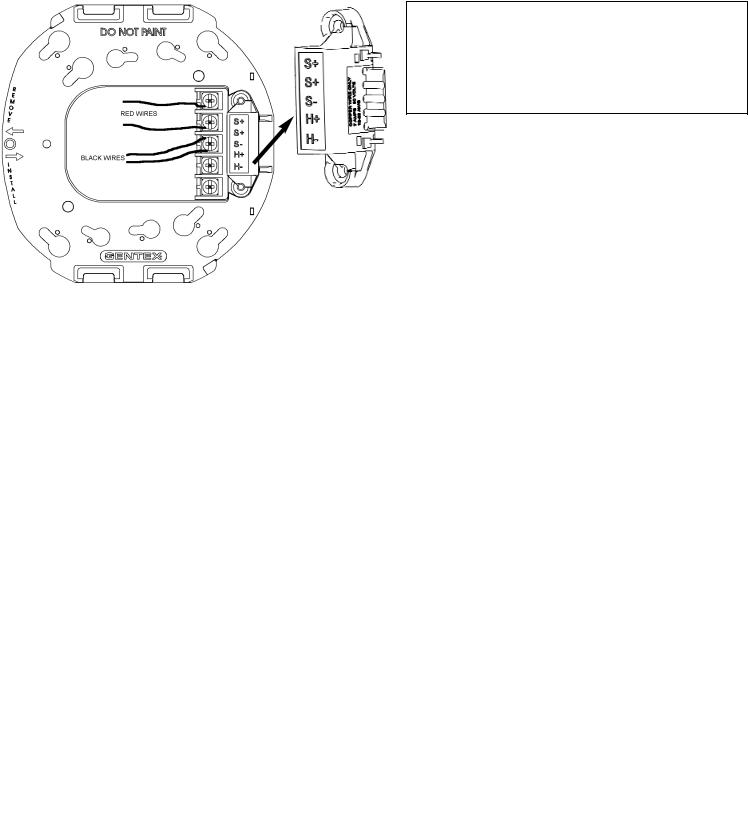Bosch GCC24-CR, GCC24-CW, GCS24-CR, GCS24-CW Installation Manual

GCS24 & GCC24
SERIES
UL 1971 COMPLIANT
CAN/ULC S526-M87 Compliant
Selectable Candela Ceiling Strobe & Horn Strobe
I. INTRODUCTION
The Gentex Model GCC24/GCS24, horn/strobe and strobe, is a high quality visible and/or audible signaling appliance intended for ceiling applications. The high intensity strobe utilizes a Xenon flash tube that generates a high-intensity flash visible from all angles. This appliance is intended to provide a visible or audible/visible, depending on the model, notification signal for the purpose of life safety and property protection. This appliance is ideal for any occupancy that requires notification appliances per the applicable building or fire code or wherever dependable alarms are required. The strobe is listed in compliance with UL
1971, Signaling Appliances for the Hearing Impaired and CAN/UL S526-M87 Visible Signal Devices for Fire Alarm Systems.
II. LOCATION
This appliance is intended for use in Fire Alarm Systems and is to be installed in accordance with this manual, the recommendation of the local authorities having jurisdiction, and other NFPA documents that provide standards on notification appliances for protective signaling systems. The GCC24/GCS24 is intended for indoor installations only. This appliance is not weatherproof for outdoor or drip proof applications.
Spacing shall be in accordance with Table A. If a room configuration is not square, the room size that will entirely encompass the room or subdivide the room into multiple squares shall be used.
Table A
Maximum Room Size |
|
Minimum Required Light Output (Effective Intensity, Cd; One Light) |
|||||
|
|
|
|
Maximum Ceiling Height |
|
||
Meters |
Feet |
|
10 Foot Ceiling |
|
20 Foot Ceiling |
|
30 Foot Ceiling |
6.10 x 6.10 |
20 x 20 |
15 |
|
30 |
|
55 |
|
|
|
||||||
9.14 x 9.14 |
30 x 30 |
|
30 |
|
45 |
|
75 |
12.2 x 12.2 |
40 x 40 |
|
60 |
|
80 |
|
115 |
15.2 x 15.2 |
50 x 50 |
|
95 |
|
115 |
|
150 |
1

III. MOUNTING, ROUGH-IN BOX AND RUN WIRING
This unit is designed for mounting to most single gang boxes, 4" square outlet boxes, 2-gang masonry boxes or non-metallic 2-gang switch boxes.
Conduit entrance to boxes should be selected to insure sufficient wiring clearance.
1.Mount a box for each remote signaling appliance. Screw bracket onto box. Insert signal into bracket and slide to the right firmly into the terminal block receptacle. Insert mounting screw as shown and tighten. Cover assembly with the plastic housing.
2.Run a minimum 18 gauge insulated 2 or more conductor cable.
Attention: Wiring should be connected to mounting bracket prior to mounting signal. Incoming positive power lead must be broken and each lead is to be inserted into each of the top two terminals. If two power runs are made to the signal, one for the strobe and one for the horn, only one of the runs must have its positive lead broken and placed under the two separate top terminals. A barrier is provided to prevent both leads from being placed under the same terminal.
CheckmateTM Voltage Verification Access Holes:
It is often necessary to confirm the voltage drop along a line of devices. The access holes are provided in the back of the terminal block to allow the voltage to be measured directly without removing the device. Typically this would be done at the end of the line to confirm design criteria. Most measurements will be taken using the S+ and S- locations although access is provided to other locations.
NOTE: Care should be taken to not short the test probes.
CAUTION: A jumper card is provided to test for correct wiring in the supervisory mode only. DO NOT pass alarm current through the jumper.
NOTE: All strobes are designed to flash as specified with continuous applied voltage. This appliance is not recommended for use on coded or pulsing signaling circuits. However, use of the AVSM control module is permitted to synchronize the strobe and/or mute the horn.
IV. WIRING
Wiring for independent synchronized strobes and horn.
Using this method you may:
·Use only two wires to synchronize the temporal horn and strobe with the ability to mute the horn (place switches 1 and 2 up on the GCC24).
·Mute the horn only when the temporal horn option has been selected.
Wiring for synchronized parallel (unison) horn/strobe operation.
Using this method you may:
·Use only two wires to synchronize the temporal horn and strobe without the ability to mute the horn (place switches 1 and 2 up on the GCC24).
·Choose either temporal or continuous horn with the temporal horn synchronized.
·Also wire the control module (AVSM) to only the strobe input power terminals, set the horn to continuous mode and power it from a coded source.
NOTE: For this option, switches 1 and 2 on the GCC24 (Fig.1) must be down to isolate power to the audible and visible portion of the circuit.
2
